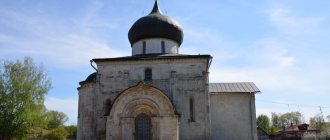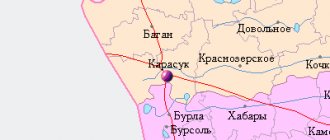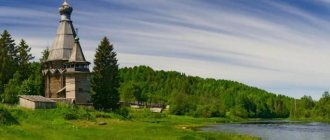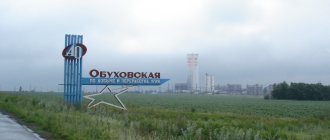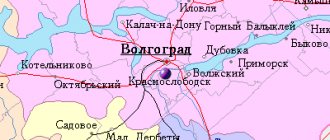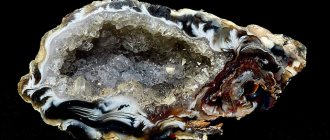For other places with the same name, see Murashi.
City in Kirov Oblast, Russia
| Murashi Murashi | |
| City [1] | |
| Murashi Railway Station, Murashi | |
| Coat of arms | |
| Location of Murashi | |
| Murashi Location of Murashi Show map of Russia Murashi Murashi (Kirov region) Show map of Kirov region | |
| Coordinates: 59°24'N 48°59'E / 59.400°N Latitude 48.983°E / 59,400; 48.983 Coordinates: 59°24'N 48°59'E. / 59.400°N 48.983°E / 59.400; 48.983 | |
| A country | Russia |
| Federal subject | Kirov region [1] |
| Administrative region | Murashinsky district [1] |
| Town | Murashi [1] |
| Based | 1895 |
| City status from | 1944 |
| Height | 210 m (690 ft) |
| population size (2010 Census) [2] | |
| • General | 6 750 |
| • Evaluate (2018) [3] | 6218 ( -7,9% ) |
| Administrative status | |
| • Capital from | Murashi district [1], Murashi city [1] |
| Municipal status | |
| • Municipal district | Murashinsky municipal district [4] |
| • Urban village | Murashinskoye urban settlement [4] |
| • Capital from | Murashinsky municipal district [4], Murashinsky urban settlement [4] |
| Timezone | UTC+3 (MSK[5]) |
| Postal code [6] | 613710, 613711 |
| OKTMO ID | 33624101001 |
Murashi
(Russian: Murashi) is a city and the administrative center of Murashinsky District in Kirov Oblast, Russia, located 112 km (70 mi) northwest of Kirov, the administrative center of the region, on the Kirov-Syktyvkar Highway. Population: 6,750 (2010 census); [2] 7,650 (2002 census); [7] 10,059 (1989 census). [8]
Links[edit]
Notes[edit]
- ^ abcdefgh Law No. 203-ZO.
- ^ a b Federal State Statistics Service (2011). “All-Russian Population Census 2010. Volume 1" [All-Russian Population Census 2010, vol. 1]. All-Russian Population Census 2010 [All-Russian Population Census 2010]
. Federal State Statistics Service. - "26. The size of the permanent population of the Russian Federation by municipalities as of January 1, 2022". Federal State Statistics Service. Retrieved January 23, 2022.
- ^ abcde Law No. 284-ZO
- "On the Calculation of Time". Official Internet portal of legal information
. June 3, 2011. Retrieved January 19, 2022. - Post office. Information and computing center of OASU RPO. ( Post office
).
Search for postal service objects ( postal Search for objects
) (in Russian) - ↑
Federal State Statistics Service of Russia (May 21, 2004).
“The population of Russia, the constituent entities of the Russian Federation as part of federal districts, urban settlements, settlements, settlements of 3 thousand or more people” [Population of Russia, its federal districts, federal districts, districts, urban settlements, rural settlements - administrative centers and rural settlements with a population of more than 3,000 people] (XLS). All-Russian Population Census 2002
. - “All-Union Population Census of 1989. The current population of union and autonomous republics, autonomous regions and districts, territories, negative phenomena, urban settlements and rural district centers” [All-Union Population Census of 1989: current population of union and autonomous republics, Autonomous regions and districts , territories, regions, districts, urban settlements and villages performing the functions of district administrative centers. All-Union Population Census of 1989 [All-Union Population Census of 1989]
.
Institute of Demography of the National Research University: Higher School of Economics [Institute of Demography of the National Research University: Higher School of Economics]. 1989 - via Demoscope Weekly
.
Pedigree of the small homeland
A settlement on the site of the modern city arose in 1898 in connection with the construction of the Perm-Vyatka-Kotlas railway. Since 1929, Murashi has been the center of the district of the same name. Received city status in 1944.
Located in the northern part of the region on the Kirov-Kotlas railway, the distance to the regional center is 117 kilometers.
Population - 9.4 thousand people (1993).
In the dense taiga, rich in animals and birds, in a remote region with mighty spruce trees, from the branches of which shaggy moss hangs, among the swamps, covered in autumn with a red carpet of berries, axes began to clatter. Construction of the Vyatka-Kotlas railway began. In the surrounding villages there was a rumor about a “fiery beast”. Grandmothers were baptized, predicting the coming of the Antichrist, and men were scratching their heads. And the road, thanks to the efforts of the artisans, made its way further and further through the taiga.
This was in 1898. In big cities, factories and mills were blaring their whistles, but here, on the southern part of the Northern ridges, on flat-sloping watersheds, among many forest rivers and streams, in small villages and rich villages, to the sound of bells, there was a measured, some well-fed, and Most people don't have a very good life. The volost administration was located in the village of Belozerye and was subordinate to the Pinyuzhansky volost of the Oryol district. The village had the only school in the entire volost, and the nearest hospital was located thirty miles away, in Verkhodvorye.
What were our great-grandfathers thinking about and wishing for? Probably about the future, about something new and bright. And as a harbinger of this new thing, six kilometers from the village, on the 117th kilometer from the provincial Vyatka, an embankment began to grow. It was initially decided to build a station here. However, they didn’t calculate something and subsequently moved it two kilometers closer to Kotlas. And although the place was damp and swampy, this did not bother the organizers. They knew that such difficulty was not a hindrance. The Vyatka man is familiar, he can overcome anything. But the local residents did not think about the meaning of the new construction. Perhaps only prospectors and engineers who settled in the village of Murashi knew that the Perm-Kotlas road is the shortest route from Siberia to the Arkhangelsk port, and therefore to Western European countries, where Siberian grain and timber are at a high price. The men understood one thing: their skillful hands are needed. Soon, with their labor, a station was built, which, like the village that sheltered the prospectors, was named Murashi.
New life has begun to blossom in a remote region. More and more people from villages came to the railway. The construction of a return depot was started so that locomotives coming from Oparino could refuel with water and firewood.
And somehow, at first imperceptibly, and then life became more and more hurried. In 1899 - 1990, houses began to grow along the street that now bears the name of Lenin . Single-story wooden buildings still exist today. The first educational institution appeared in Murashi in 1904; it was a two-class railway school, and a clinic opened opposite it.
The settlement grew, but most importantly, the children grew up, in front of whose eyes their fellow countrymen were leaving somewhere far away by rail, and learned people came along the same “piece of iron”: doctor Ogorodnikov, gendarme Syutkin, machinists Rashchevskikh, Sintsov, Yukhnevich, Emelyanov represented new life. These were visitors, the intelligentsia. In the Rashchevskys' there is a billiard room, a dance room, and a library. On the current Karl Marx Street, on the site of the current building of the people's court, there was a shop of the merchant M.V. Malkov. He sold food products and later built a bakery. Life in Murashi flowed slowly, without any special incidents and, as we would now say, stress, until the first Russian revolution broke out.
The year 1905 brought so many human passions in its depths that we still look into it, looking for their beginnings.
This is what Murashi resident A.K. Kalabina writes in her memoirs: “I remember the general railway strike of 1905. My father then worked as a watchman for railway conductor brigades, whose office premises were located next to the house of employees of the transport consumer society. I was six years old then. I remember the procession of depot workers with burning torches, they sang revolutionary songs. The strike was led by Dr. Treiter, station chief Zhiganov and others.
Revolutionary-minded workers, telegraph operators, and minor employees gathered with us, in the conductor's and brigade's rooms, and discussed the state of affairs. The security guards found out that the Murashino railway workers supported the strike. A detachment of gendarmes arrived from Vyatka on a special train. Searches, arrests, and interrogations began. The gendarmes burst into our place. They interrogated my father, trying to find out the names of the leaders of the revolutionaries. Father was silent...”
The revolutionary wave subsided. People became quiet. And life picked up speed. In 1915, the cultural and educational society collected money from the population to purchase premises for the school. Soon it was opened, receiving the status of an elementary school. In the same way, a library with several dozen books was created. The peasants who came from the villages settled down, built houses, started farming, and the railroad provided work. And there, in the depot, in the conductor brigades, in different areas where the work was hard, something began to boil again. Young people read banned books.
February 1917 stirred up red flags. Life began to boil, and the old channel became crowded. Let us turn to the memoirs of A.K. Kalabina:
“In February, my brother Vasya spent all his free time at the telegraph; he and his friends were catching information about the events taking place in Petrograd. One day he ran home and said: “Mom, the king has been overthrown!” I remember the meeting during that turbulent year. They voted for lists of Bolsheviks, led by Lenin, and Mensheviks. The Mensheviks had the authorities on their side: assistant depot manager Masharov, distinguished machinists. The Menshevik group was headed by a certain Serebrin. Those gathered were divided. Those who are for the Bolsheviks stood on the left side, those who supported the Mensheviks stood on the right. The Bolsheviks won. The workers disarmed the bailiff and tore down the sign from his house.”
This is how Soviet power came to Murashi, this is how a new era began.
Many wonderful people grew up in the city, they are remembered and proud of them. And somehow they forgot about the man who was among the first in the country in 1936 to receive the title of Hero of Labor. But thanks to the local history “excavations” of E. S. Dorofeev, an enthusiast of his business, we now know that Konstantin Vasilyevich Rychkov lived in the city and worked in the locomotive depot. His daughter still lives in her father’s house. It was she who provided local historians with interesting documents. In particular, here is the Certificate of the All-Russian Central Executive Committee, which confirms the fact that Rychkov a high rank:
“The Presidium of the All-Russian Central Executive Committee, noting your outstanding and exceptionally useful activities in socialist construction, expressed in an energetic struggle based on the methods of socialist competition and shock work for the best depot and locomotive fleet, through personal exemplary work, training of locomotive repair workers and drivers and a number of rationalization and inventive proposals that have had a great economic effect in the repair of steam locomotives, awards you the title of Hero of Labor.”
K.V. Rychkov was also one of the first in the Gorky region to be awarded the Order of the Red Banner of Labor. In 1989, during the celebration of City Day, a memorial plaque was unveiled in honor of the noble Murashi resident, Hero of Labor. It is fixed on the building of the new station.
In 1925, the station village was transformed into the working village of Murashi. There was a continuous forest around it. “You used to look out of a hut at night,” recalls local resident M.V. Belozerova, “it was dark, scary. You can only hear the wolves howling. And all around you, like a solid black wall, the taiga is closing in on you and crushing you. So it seems: someday these gigantic walls will move and wipe out this miserable human settlement from the face of the earth.”
But it was not there. Our fathers built their new world, believing that he who was nothing would become everything. According to the 1926 census, the population of the village was 1,736 people. In 1929, it became the center of the district of the same name. Since that time, various organizations have been created: Murashinsky timber industry enterprise, regional printing house, creamery, bakery. The Murashinsky branch of the railway opens. A network of social and cultural institutions is being created: a railway outpatient clinic, a club, an eight-year school, a regional House of Culture, a telephone exchange with 30 numbers, and the Belozersk hospital.
The 1939 census registered 7,538 people in the village. Over 15 years, the population has grown 4.3 times. At the tenth session of the Murashi Village Council of Workers' Deputies on March 11, 1941, the issue of transferring the Murashi village from the category of a workers' village to a city was discussed; The issue was introduced by railway workers at a ceremonial meeting on March 8. At the session there were two proposals for the name of the city - Krupsk and Mayakovsk, in honor of famous people of the past. The session decided to petition Moscow to give the city the name Mayakovsk.
But the Great Patriotic War began, and there was no time for the name. The Murashinites, like everyone who remained in the rear, considered their main task to be helping the front. The railway worked uninterruptedly, logging proceeded at an accelerated pace. Residents of the village collected warm clothes, women knitted socks and mittens, sending it all to the front. Bonds and money were collected into the defense fund.
A hospital was located in five buildings in the village, and the executive committee at its meeting on February 6, 1942 decided to take patronage over it. The fact that many fighters survived is largely due to the merits of female deputies: M.I. Belozerova, E.V. Zubova, M.P. Rychkova, M.R. Shubina, L.I. Ivanova, A.K. Anisimova and a dozen other residents of Murashi. They are in the rear, and their husbands and sons are at the front, bringing victory closer.
During the Great Patriotic War, due to the influx of evacuees, the population of the village reached 16 thousand people. On April 17, 1944, by the Decree of the Presidium of the Supreme Soviet of the RSFSR, the workers' village of Murashi was transformed into a city of regional subordination, retaining its former name.
There is a place in Murashi from where the city can be seen in all its diversity: the railway bridge, built in 1951. If you happen to visit the city, be sure to come up here. Your gaze will run along the straight, green streets. You will see on the south side, in the center, the buildings of the district administration, the Voskhod cinema, the regional consumer union, stone residential buildings, and the Lokomotiv stadium. On the northern side, the House of Culture of Railway Workers and the regional communications center will attract attention; from behind the trees you can see the roof of the hotel, the three-story building of the railway hospital and again blocks of residential buildings. Further - to the north and south, west and east - wooden houses with private plots, and then, to the horizon, a forest - smaller than before, but still hugging the city. The railway divides it into southern and northern parts, but, of course, this division is arbitrary.
According to the 1989 census, there were 9,891 residents in the city, 20,188 in the district. The working population is 54.1 percent. Every day people of different nationalities greet the dawn in the city and region. The main population, 93.3 percent of Murashino residents, are Russians. There are Ukrainians, Belarusians, Maris, Tatars, and Udmurts.
And again we are on the bridge. From here you can clearly see the new railway station. Murashi is a large railway junction. From the station square roads are open to all corners of our country. In addition, the republican highway Kirov - Syktyvkar passes through the city. Recently, the Murashi-Kirov section received asphalt pavement, as a result of which bus traffic was opened along the entire length.
Train tracks are rarely empty. Loaded trains depart from here around the clock. The main wealth - timber - is sent from the region to various destinations in the country and abroad. Many Murashino residents have connected their entire lives with the railroad. The station, the eleventh track distance, the replacement point of the Lyangasovo locomotive depot, the wagon preparation point, the Murashinsky directorate of the labor supply department and many other services allow you to choose a profession to your liking.
The mechanical repair plant plays a significant role in the life of the city. Transformed in 1965 from a locomotive depot, it has preserved the good traditions laid down by the founders of the city. Now repairmen monthly give a second life to an average of seventeen narrow gauge diesel locomotives and produce consumer goods. The production of Nizhneskladskaya equipment for logging enterprises has begun.
Approaching the city from Kirov and heading towards Kotlas, passengers cannot help but notice stacks of timber. The forest, however, is not the same anymore. Timber logging has long ceased around the city. Logging crews went tens of kilometers into the taiga. Hundreds of thousands of cubic meters of wood are delivered to consumers annually. Three large logging enterprises: Elovsky, Shubryugsky, Mezhhozyaystvenny, and, in addition, the Murashinsky logging station of the integrated logging enterprise of the same name, an inter-farm forestry enterprise, and logging offices are processing wood. But, to be honest, we still don’t know how to work with forests. Lots of waste, lots of mismanagement. Production is based on primary processing. Recently, due to economic difficulties, there has been a decline in production.
In Murashi there are 15.5 thousand square meters of socialized housing stock, 65.6 thousand square meters of housing stock are in the personal property of citizens. The socialized fund is 39.1 percent equipped with water supply, 20.3 percent with sewerage, 30.8 percent with central heating, 18.3 percent with baths, 84.7 percent with gas, and 5.6 percent with hot water supply.
Every day, more than a thousand boys and girls sit at their desks in two secondary schools. There are three libraries in the city with a total book collection of 108,939 copies; in addition, there are two school and technical libraries. At the children's sports school, 285 young athletes are on a difficult path to records.
The city is characterized by problems that most small towns in Russia face. There is not enough housing, roads need to be built, and the problem of water supply, sewerage, and landscaping is acute. But with their work and dedication to the city, Murashi residents try every day to make it better, which means the city has a future.
Key dates
1898 - a settlement appears on the site of the modern city.
1904 - a two-class railway school opened.
1915 - a higher primary school opened.
1929 - the village of Murashi becomes the center of the district of the same name.
1936 - depot master K.V. Rychkov was one of the first in the country to receive the title of Hero of Labor.
1944 - the village of Murashi was transformed into a city.
1965 - the locomotive depot was transformed into a mechanical repair plant.
(V. A. Sitnikov, N. I. Perminova and others “Encyclopedia of the Vyatka Land” Vol. 1. Cities. Kirov. 1994.).
Murashi
(Kirov region)
OKATO code:
33224501
Founded:
1895
Urban settlement since:
1928
City since:
1944 City of district subordination (Murashinsky district, Kirov region)
Center:
Murashinsky district
Telephone code (reference phone)
| 83348***** | 92-2-22 |
Deviation from Moscow time, hours:
0
Geographic latitude:
59°23′
Geographic longitude:
48°58′
Altitude above sea level, meters:
210 Sunrise and sunset times in the city of Murashi


